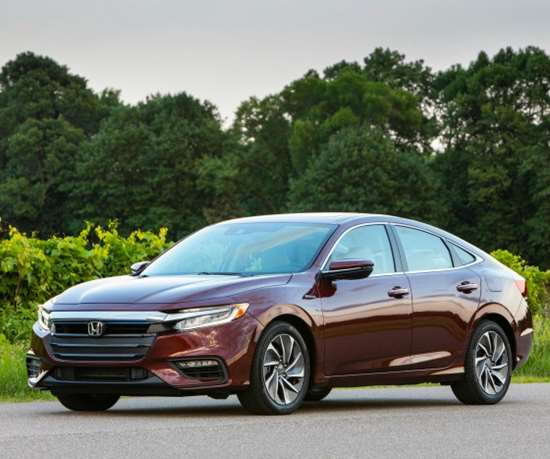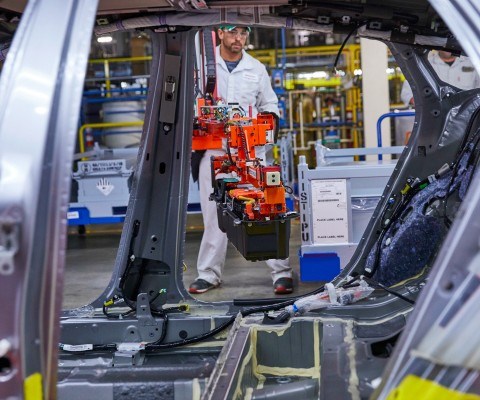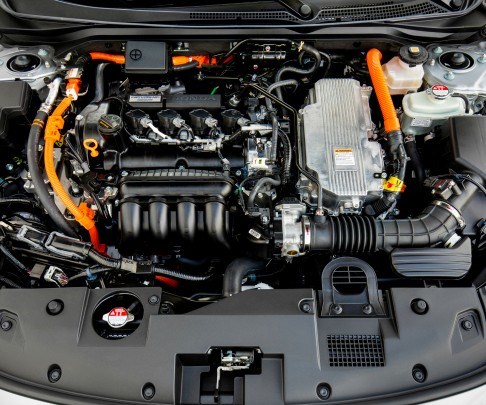2019 Honda Insight: Smart, Stylish Sedan—And It’s a Hybrid
Honda’s unwavering commitment to the electrification of its lineup continues with the third-generation Insight.
#hybrid
Noriyuki Sato, chief engineer, Performance, 2019 Honda Insight, has spent some 17 years working on sedans at Honda, and a solid percentage of that time on hybrid vehicles. As Honda has become more increasingly committed to the electrification of its vehicles—Honda CEO Takahiro Hachigo said at the 2017 North American International Auto Show in Detroit that Honda plans to have two-thirds of its global auto sales be of electrified vehicles by 2030—developments like the third-generation Insight are important. And while on the subject of this being the third generation, it is worth pointing out that the first-generation vehicle was launched in the U.S. in December 1999—seven months before the Toyota Prius—so Honda’s bona fides in hybrids are nothing if not solid.
For this new car, Sato says that the “grand concept” behind the development was “Smart Green Sedan.” Fully recognizing that there tends to be a greater demand in the market overall for crossovers rather than sedans—and the 2019 Insight is a sedan—Sato says that they emphasized the styling for the Insight, both inside and out, with the exterior being characterized by dynamic surfaces and large fender forms in the body side, helping emphasize width, and the interior having an instrument panel with a wide horizontal motif and the use of premium materials wherever there are likely touch points.
The Insight is positioned in the Honda lineup between the Civic and the Accord in terms of sedans and below the Accord Hybrid and the Clarity Plug-In Hybrid in terms of the electrified sedan hierarchy (the Insight has a starting MSRP of $22,830, the Accord starts at $25,100 and the Clarity at $33,400).
Sato puts it in a way that can’t help but telegraph the message: “More than anything, we wanted it to look cool.”
Another way of describing the Insight from Chris Hand, the product planner for the car: “It is a great compact sedan, first and foremost. That happens to be a hybrid.”
The Insight is built on the fundamental structure of the 10th-generation Civic. Of course, as the Civic isn’t a hybrid, there needed to be modifications made to the base body, such as a unique front frame structure for the Insight, as well as accommodation for handling the hybrid battery pack. What’s more, the exterior sheet metal for the Insight—with the exception of the roof and the rear quarter panels—isn’t shared with the Civic. (The Insight, incidentally, has an aluminum hood; all the exterior sheet on the Civic is steel. The hood is a 16.7-pound weight save compared with a steel hood. However, the Insight, like the Civic, is structurally steel-intensive. Overall, 59 percent of the body structure is high-strength steel and 14 percent of the structure is ultra-high-strength steel.)
And arguably, the styling of the Insight is biased more toward the Accord than the Civic, as the vehicle is meant to be perceived as being more sophisticated than sporty (although there are numerous features—everything from a sport steering wheel to the suspension setup—MacPherson strut in the front, multilink in the rear—to a Sport driving mode button on the center console that provides quicker throttle response—that are meant to make the Insight sportier.)
While the hybrid powertrain is essentially transparent during operation, what makes the Insight particularly notable is that it is, well a hybrid.
The Insight powertrain consists of two electric motors—one, an AC synchronous, 96-kW propulsion motor and a small generator motor—that is linked with a 1.5-liter, 107-hp Atkinson-cycle four-cylinder engine: rather than having a transmission between the engine/generator motor and the traction motor, there is a lockup clutch between the two, thereby allowing power to go directly from the engine to the front wheels (the Insight is a front-drive car), supplementing the propulsion motor when required. For example, when the car is cruising along at high speeds, like on a freeway, and the engine is in its high-efficiency range, then the clutch is engaged. When the car is being propelled by the electric motor (e.g., when regenerative braking, which, incidentally, begins when the brake pedal is depressed and continues until the vehicle speed is below 1 mph, at which point the friction brakes become fully engaged), then the engine is shut off and the clutch is disengaged; this disengagement keeps the motor from having to deal with friction losses from the engine.
This is the third generation of Honda’s two-motor system, with the first two launching on Accord Hybrids (2014 and 2016). This third-generation system is also available on the 2018 Accord Hybrid, although in that application there is a 2.0-liter, 143-hp Atkinson-cycle four-cylinder engine and a larger permanent magnet electric motor (135 kW).
One of the considerations in the system development was to make components as compact as possible for purposes of packaging. For example, the Intelligent Power Unit (IPU), which houses the 60-cell lithium-ion battery pack, was reduced in size by 32 percent, although a portion of that is the result of moving the DC-DC converter out of the IPU and into the Power Control Unit (PCU). However, even with the addition of the converter the PCU, which is located in the engine compartment, doesn’t require more space than in previous generations of the system. The smaller IPU is located underneath the rear seat, thereby not compromising the cargo capacity of the vehicle (the LX and EX trims have 15.1-ft3 of cargo capacity; the Touring 14.7-ft3).
All of this is transformed into fuel efficiency: the LX and EX models have an estimated 55/49/52 mpg, city/highway/combined, and the Touring 51/45/48 mpg.
RELATED CONTENT
-
Hyundai Shops for a Partner to Make Electric Scooters
Hyundai Motor Co. is looking for a domestic partner to mass-produce the fold-up Ioniq electric scooter it unveiled at last year’s CES show in Las Vegas, a source tells The Korea Herald.
-
GAC, CATL Partner on Two Battery Ventures
Two new battery ventures are being formed in China by domestic carmaker Guangzhou Automobile Group Ltd. and battery giant Contemporary Amperex Technology Ltd.
-
Internal Combustion Engines’ Continued Domination (?)
According to a new research study by Deutsche Bank, “PCOT III: Revisiting the Outlook for Powertrain Technology” (that’s “Pricing the Car of Tomorrow”), to twist a phrase from Mark Twain, it seems that the reports of the internal combustion engine’s eminent death are greatly exaggerated.


.jpg;width=70;height=70;mode=crop)



